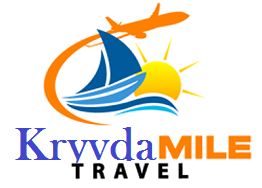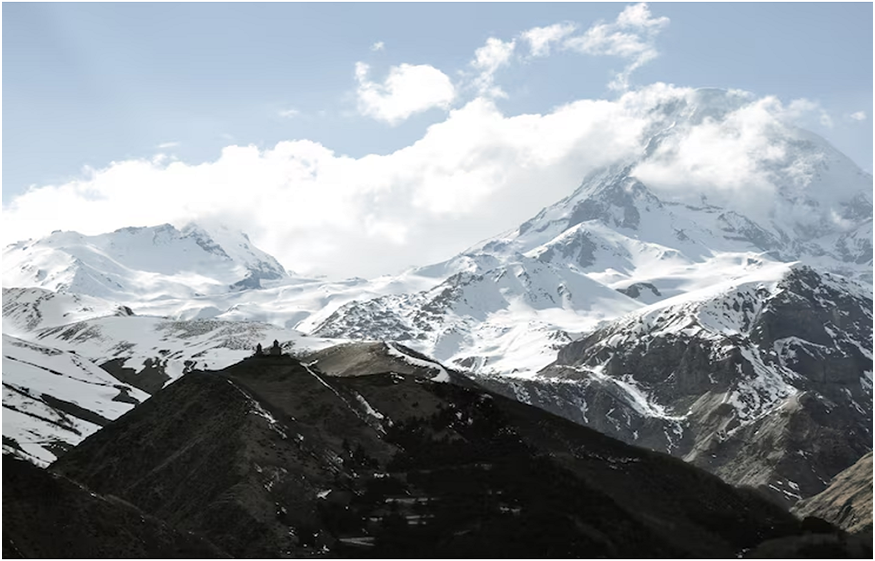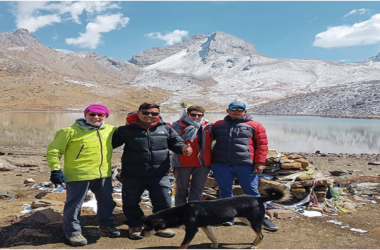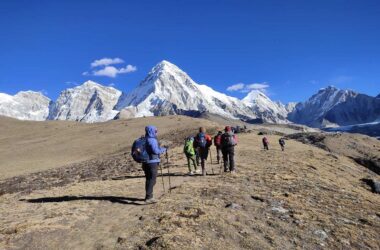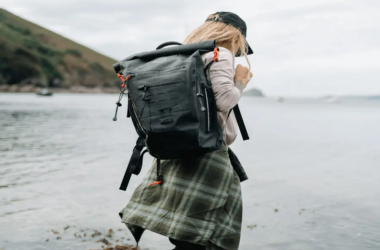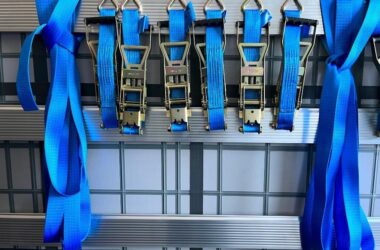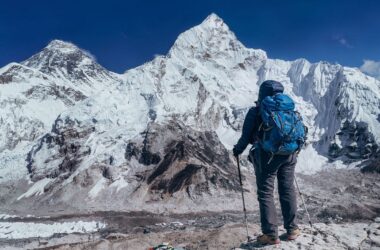The Everest Base Camp Trek is one of the most notorious ventures in the world. Each year, thousands of travelers from around the globe travel to Nepal for a chance to see Mount Everest up near. The Trek offers an uncommon mix of social drenching, tough mountain territory, and breathtaking Himalayan sees. But some time recently setting off on this bucket-list enterprise, understanding the Everest Base Camp Trek took a toll and schedule is fundamental for legitimate planning.
Overview of the Everest Base Camp Trek
The Everest Base Camp Trek takes you profoundly into the heart of the Khumbu region, home to the Sherpas and the amazing Mount Everest. The Trek as a rule starts with a exciting flight from Kathmandu to Lukla, and from there, it winds through pleasant towns like Namche Bazaar, Tengboche, Dingboche, and Gorak Shep, eventually driving to the base of the most elevated mountain on Earth—Everest, standing tall at 8,848.86 meters.
Standard Itinerary for Everest Base Camp Trek (14 Days)
Here’s a commonplace 14-day Itinerary for the Everest Base Camp Trek:
Day 1: Entry in Kathmandu
You’ll arrive in Nepal’s capital and settle in. A brief briefing session more often than not takes after in the evening.
Day 2: Flight to Lukla (2,860m) – Trek to Phakding (2,610m)
A picturesque 35-minute flight takes you to Lukla. The Trek to Phakding is around 3–4 hours through wonderful pine woodlands and suspension bridges.
Day 3: Phakding to Namche Bazaar (3,440m)
This day includes a soak climb, with your to begin with sees of Everest. Namche is a bustling town filled with shops, pastry shops, and lodges.
Day 4: Acclimatization in Namche
A rest day to alter to the height. A brief climb to Everest See Lodging or Khumjung Town makes a difference with acclimatization.
Day 5: Namche to Tengboche (3,860m)
You’ll climb through rhododendron woodlands and cross the Dudh Koshi Stream. Tengboche Religious community offers one of the best all encompassing views of Everest, Ama Dablam, and Lhotse.
Day 6: Tengboche to Dingboche (4,410m)
The path slips and at that point climbs once more as you move into the drier, more snow capped terrain.
Day 7: Acclimatization in Dingboche
Another rest and acclimatization day. A well known climb leads to Nangkartshang Top for terrific views of Makalu and Island Peak.
Day 8: Dingboche to Lobuche (4,940m)
You’ll pass dedications to fallen climbers some time recently coming to the little settlement of Lobuche.
Day 9: Lobuche to Gorak Shep (5,164m) – Climb to Everest Base Camp (5,364m)
After coming to Gorak Shep, you’ll climb to the incredible base camp and return to rest at Gorak Shep.
Day 10: Climb Kala Patthar (5,545m) – Trek back to Pheriche (4,371m)
An early morning climb to Kala Patthar gives you the best dawn view over Everest. At that point plummet to Pheriche.
Day 11: Pheriche to Namche Bazaar
Retrace your steps back to Namche.
Day 12: Namche to Lukla
Continue plummeting and appreciate your final night in the Everest region.
Day 13: Fly to Kathmandu
Return to the bustling lanes of Kathmandu.
Day 14: Departure
Your Himalayan enterprise comes to an end.
Everest Base Camp Trek Cost Breakdown
The Everest Base Camp Trek depends on different components such as the trekking office, term, administrations, and season. Normally, the Cost can run from $1,200 to $2,500 per individual for a standard 14-day package.
- Permits and Entry Fees
Sagarmatha national park permit: USD 30
Khumbu Pasang Lhamu Country District Allow: USD 20
Total: USD 50
- Flight to Lukla (Round Trip)
Kathmandu to Lukla and back: USD 180–200 each way
Total: USD 360–400
- Guide and Porter Fees
Guide: USD 25–30/day
Porter: USD 20–25/day
For 14 days: Around USD 600–800 combined
- Accommodation
Teahouses cost around USD 5–10 per night.
Total for 13 evenings: USD 65–130
- Dinners and Drinks
Meals (3 times a day): USD 20–30/day
Total for 14 days: USD 280–420
Drinks/snacks: Additional USD 50–100
- Various Costs
Charging hardware, hot showers, Wi-Fi, and tips
Budget an additional USD 100–150
Total Assessed Costed: USD 1,200 to USD 2,500
Luxury treks or helicopter returns can thrust the cost up to USD 4,000–5,000, depending on the benefit level.
Comparing with Other Treks: Manaslu Circuit Trek and Annapurna Circuit Trek
While Everest Base Camp is without a doubt Nepal’s crown gem, two other treks offer extraordinary esteem, isolation, and enterprise: the Manaslu Circuit Trek and the Annapurna Circuit Trek.
The Manaslu Circuit Trek culminates for those looking for a less swarmed, more farther Himalayan encounter. It circles the eighth-highest mountain in the world—Mount Manaslu (8,163m)—and offers sensational gorges, lavish woodlands, and Tibetan-influenced towns. The Trek is considered tolerably challenging and requires an extraordinary limited range permit.
The Annapurna Circuit Trek , on the other hand, is one of the most assorted and fulfilling trekking courses. It crosses the Thorong La Pass (5,416m) and navigates an assortment of environments, from subtropical woodlands to elevated zones. With its tea house culture, emotional mountain backdrops, and simple get to, it remains a well known elective to EBC.
Both the Manaslu Circuit Trek and Annapurna Circuit Trek took a toll altogether less than the Everest Base Camp Trek and do not require a Lukla flight, making a difference if you dodge extra travel expenses.
Best Time for Everest Base Camp Trek
The perfect seasons for the EBC Trek are:
Spring (March to May): Clear skies, sprouting rhododendrons, and direct temperatures.
Autumn (September to November): Great perceivability and steady climate conditions.
Winter (December to February) is cold and snow-bound, whereas storms (June to Admirable) bring rain and elusive trails.
Accommodation and Food on the Trail
The Everest region has a few of the best teahouse frameworks in Nepal. Rooms are fundamental but clean. Most offer twin beds with covers, but it’s suggested to carry a resting bag.
Food is carb-rich to meet trekking requests. Common dinners include:
Dal Bhat (lentils, rice, and vegetables)
Tibetan bread
Momos (dumplings)
Noodles and pasta
The higher you go, the more restricted and costly the nourishment gets to be due to transport challenges.
Health and Safety
Altitude affliction is a genuine concern. Acclimatization days are built into the schedule to permit your body time to alter. It’s vital to hydrate, dodge liquor, and tune in to your body.
Travel protection that covers high-altitude trekking is a must. Select arrangements that cover crisis departure and therapeutic treatment up to 6,000 meters.
Trekking Independently vs. With a Guide
Although the EBC path is well-marked, contracting a direct guarantee guarantees security, improves your social involvement, and contributes to the neighborhood economy. Watchmen can offer assistance to ease the physical strain, permitting you to appreciate the view more.
Some travelers select guided gathering visits, whereas others pick for a private direct and watchman group. Free trekking is conceivable, but first-timers are prompted to go with support.
Environmental and Cultural Respect
The Everest region is sacrosanct to the Sherpa community and is environmentally delicate. Capable trekking means:
Carrying reusable water bottles and filtration tablets
Not littering or utilizing plastic
Respecting neighborhood traditions, dress codes, and monasteries
Why You Might Choose Manaslu Circuit Trek or Annapurna Circuit Trek Instead
If you’re looking for less swarms, both the Manaslu Circuit Trek and Annapurna Circuit Trek offer compelling options. The Manaslu course is perfect for social inundation and off-the-beaten-path globe-trotters. The Annapurna course highlights more prominent consolation and foundation, particularly since streets have decreased the strolling distance in a few areas.
Some trekkers indeed combine the Annapurna Circuit Trek with side treks like Tilicho Lake or the Annapurna Base Camp to amplify the encounter. In the interim, the Manaslu Circuit Trek gives a crude and bona fide Himalayan feel that’s difficult to match.
Tips to Reduce Everest Base Camp Trek Cost
Travel in a little gather to share guide/porter costs
Bring your possess snacks and medicine
Book flights and licenses early in peak seasons
Go with a neighborhood Nepali trekking company for superior prices
Final Thoughts
The Everest Base Camp Trek is a life-changing trip. Standing at the foot of Everest, encompassed by peaks like Lhotse and Nuptse, you realize just how wonderful the Himalayas genuinely are. Whereas the cost can be noteworthy, it’s a beneficial venture in one of the world’s most famous adventures.
And if you need more isolation, rough landscape, or budget-friendly alternatives, do not ignore the Manaslu Circuit Trek and Annapurna Circuit Trek. These two treks offer encounters that are each bit as marvelous as Everest, each possessing one of a kind character and charm.
Booking Process by Adventure Great Himalaya Treks:
To book any of these treks tours through Adventure Great Himalaya A Best Trekking Company In nepal ,To discuss your preferred dates, group size, and specific needs. They will provide a detailed itinerary covering these trek’s duration, highlights, cost, and inclusions such as a guide, porter, meals, accommodation, and transportation.
Prior to the trek, you will receive a comprehensive pre-trek briefing with essential information on packing, fitness preparation, and altitude acclimatization. The agency will finalize all logistical arrangements, including transportation, accommodation, and permits, to ensure everything is in place for your trek. Upon arrival in Nepal, the team will ensure that all aspects of the trek are organized, providing you with a smooth and unforgettable experience on these treks.
